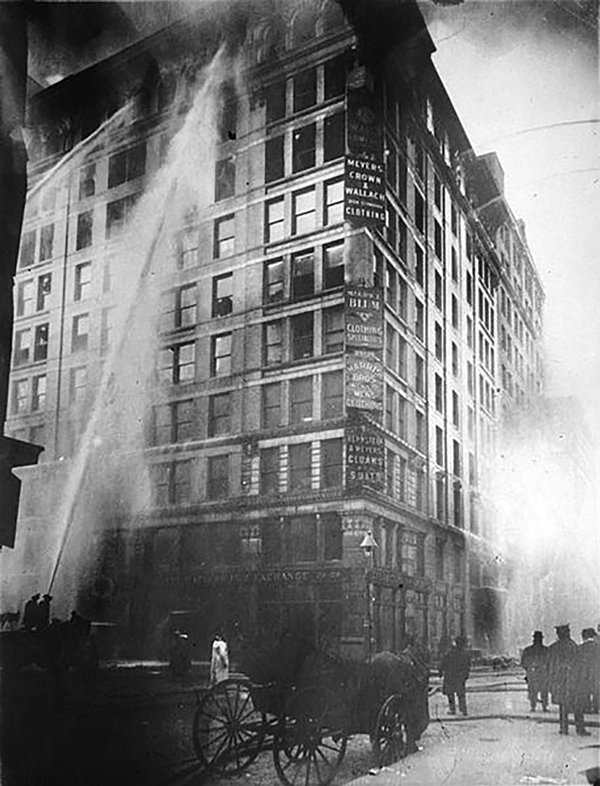BY ALEC PRUCHNICKI | Back in high school, I learned about the Triangle Shirtwaist fire, which occurred on March 25, 1911. This tragedy took the lives of 146 workers, mostly young Italian and Jewish women who lived in Greenwich Village and the Lower East Side and worked in the nearby garment factory on the corner of Washington Place and Greene St. Locked fire exit doors, inadequate elevators and fire escapes, and a location on the eighth to tenth floors, out of the reach of fire truck ladders, all contributed to the deaths.
Many years ago, during a Sunday dinner at my grandmother’s house, I found out that her sister, my great-aunt Alice, had lived in Greenwich Village at the time. When I asked her about the fire, she told me that she had actually worked at the Triangle factory and remembered the day of the fire very well, although she was not working that day.

People in the neighborhood knew Triangle. Both the Village and the Lower East Side were communities where everyone had a friend or relative working there. From history, I also knew that the owners of the Triangle factory had been well-known leaders of the employers during a major garment workers strike a few years prior to the disaster. On the day of the fire, my great-aunt was sick and she had a cousin of hers go in to take her place, since highly competitive owners didn’t want idle sewing machines. My aunt said that all the garment factories were considered firetraps, and there were constant small fires from the cloth dust, machine oil and electrical sparks, which the workers usually managed to put out themselves.
While sitting at home in her apartment, she heard a commotion in the street and looked out to see hundreds of people running toward the factory. “Triangle’s on fire!” She described the panic with such wide-eyed horror that I still can’t speak about this without getting a little choked up myself.
Other than the fact that her cousin died in the fire, I don’t remember what she said about the aftermath. But history tells the rest of the story. There was a massive funeral for the victims of the fire. The owners went to trial, but were acquitted when it couldn’t be proven that they had ordered, or even known about, the fire exits being locked.
The biggest effect was on the industry as a whole. The International Ladies Garment Workers Union, which represented the employees, underwent a major expansion. Fire and safety codes were strengthened and enforced. A generation later, when my mother and other members of my family worked in the Garment District, the Triangle Shirtwaist fire was just a memory, and not a recurring tragedy. Let’s hope it stays that way.

















